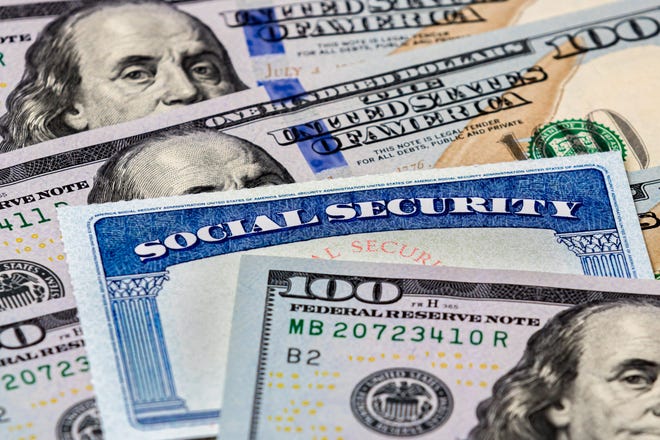Six Spaces Home Staging

Contact: Hongliang Zhang
Tel: 571-474-8885
Email: zhl19740122@gmail.com
美国通货膨胀有多严重?拜登政府将为此付出代价
来源:法广
10/25/2021
1磅韭菜5.99美元,1磅嫩姜8.99美元,1磅雪豆5.99美元……,这是一位生活在旧金山湾区的美国华人家庭主妇近日在亲友群里贴出的当地大华超市价格,她说她到美国多年来从未遇到这样的高价。而据美国中文报纸《世界日报》报道,旧金山华人常吃的米粉,零售价从半年前的每磅0.69美元,上涨到如今的1.69元,涨幅145%;豆油、味精、玉米淀粉等,涨幅一倍多;一些品牌的酱油,从每瓶1.99美元,涨到2.99元,涨幅50%。
有分析指,近半年多来,美国家庭平均每月支出比过去多出175美元。福克斯电视(Fox)商业新闻报导,芝加哥的家庭主妇艾莉森表示:“我以前每周花70美元,但今年夏天开始,不花至少120美元,我就无法离开商店。”
美国的汽油价格每年会在夏季过后下跌,但今年与以往不同:加州沿海大索尔(Big Sur)地区的一个加油站现在每加仑油价高达7.59美元;加州蒙多西诺县(Mendocino)一个加油站每加仑油价为6.73美元;在旧金山湾区,半年前给一辆车加满油要40美元,现在要60美元;纽约曼哈顿的油价已涨破每加仑5美元,家住纽约州威彻斯特(Westchester)县的李先生表示,“每天去曼哈顿上班,开车来回的成本太高了,若油价不降,很难支付起养车的生活。”
今年冬季居民的取暖费用也将上涨,《全国燃油》网站表示,取暖帐单将比去年上涨43%;11月至明年3月的取暖费预计为714美元,而去年同期是498元。一位在纽约长岛的居民说:“我们社区的房子都是天然气供暖,去年只要每月200美元就可以,今年预计要翻倍,还没经历过这么贵的冬天。”
其他生活用品也无一不涨价。日化巨头宝洁公司(P&G)近日宣布,该公司将上调口腔护理、剃须刀、头发皮肤护理等产品的价格,此前宝洁公司已经上调了婴儿纸尿裤、厕纸等产品的价格。
大卖场(Costco)、沃尔玛(Walmart)、耐克(Nike)等大型商店或品牌都预计,感恩节圣诞节假期来临前,商品还会涨价。
《华尔街日报》22日发表评论说,通胀将延续至2022年。《推特》创办人、行动支付业者Square首席执行官多尔西(Jack Dorsey)23日表示,情况将变得更糟,恶性通胀将改变一切。
在价格高涨之外,美国民众还要面对更麻烦的问题,就是有钱不一定就能买到商品。据彭博社报道,在丹佛、芝加哥等地,人们最近面临不同程度的食物短缺:芝加哥市场罐头食品和盒装食品断货;丹佛公立学校儿童牛奶供应不足;加州大卖场已经对部分商品限量购买。
梅西百货(Macy’s)财务长米切尔(Adrian Mitchell)表示,由于库存趋紧,今年圣诞购物季折扣优惠将减少;女装连锁店 J. Jill财务长韦伯(Mark Webb)表示,未来几周的折扣力道会减弱。体育用品连锁店Academy Sports + Outdoors营销长劳伦斯((Steve Lawrence)表示,今年的假期购物季,消费者将很难看到大幅折扣。
美国有线电视新闻网(CNN)报导分析,如何让在高通胀中的美国民众生活回归正常,拜登总统面对着比预期更加棘手的挑战,拜登与民主党都将因此付出巨大政治代价。
Social Security cost-of-living increase will boost benefits 5.9% in 2022 as inflation spikes
By Paul Davidson | USA TODAY
10/13/2021
Now that’s more like it.
Older Americans scraping by on meager increases in their Social Security checks the past decade will reap a relative windfall next year.
The roughly 70 million people – retirees, disabled people and others – who rely on Social Security will receive a 5.9% cost-of-living adjustment next year, the Social Security Administration said Wednesday. That’s the biggest bump since 1982.
The sharp increase is tied to a COVID-19-fueled spike in inflation after years of paltry consumer price increases.
For the average retiree who got a monthly check of $1,565 this year, the bump means an additional $92 a month in 2022, boosting the typical payment to $1,657.

Tel: 551-580-4856 | Email: F.WINNIE.S@GMAIL.COM
“The guaranteed benefits provided by Social Security and the COLA increase are more crucial than ever as millions of Americans continue to face the health and economic impacts of the pandemic,” AARP CEO Jo Ann Jenkins said in a statement. “Social Security is the largest source of retirement income for most Americans and provides nearly all income (90% or more) for one in four seniors.”

SSA bases its cost-of-living adjustment on average annual increases in the consumer price index for urban wage earners and clerical workers, or CPI-W, from July through September. The CPI-W largely reflects the broad CPI that the Labor Department releases each month.
On Wednesday, Labor said the CPI-W rose 5.9% annually in September following a 5.8% jump in August.
The COLA has averaged 1.4% the past 10 years – half the average over the prior decade – because of unusually low inflation, according to the Senior Citizen League, an advocacy group.
During this period, tens of millions of Social Security beneficiaries saw much or all of their cost-of-living increases effectively erased because of sharply climbing premiums for Medicare Part B, which are automatically deducted from many Social Security checks.
That shouldn’t be the case for most recipients this year because of the healthy COLA advance. The Part B premium is set to rise by $10 and prescription drug plan premiums are likely to increase an average of about 5%, says Mary Johnson, a policy analyst for the Senior Citizen League.
Johnson has long complained that the basket of goods that determines the CPI-W index doesn’t reflect the spending patterns of seniors who buy less gasoline, electronics and other products that make up a big portion of younger workers’ spending. Seniors instead spend more on food, health care costs and other items that have seen sharp price increases during the pandemic.
Johnson has called for the SSA to base its COLA on a proposed index for the elderly called CPI-E that would put more weight on health, food and other expenditures.
Since 2000, Social Security recipients have lost 32% of their buying power as COLAS grew by about half as much as the cost of goods and services typically purchased by retirees, according to the league.
With energy prices soaring this year, part of that dynamic is being reversed, with seniors, who don’t buy as much gasoline, poised to gain from the large COLA increase.
“They’re getting the benefit of that,” Johnson says.
At the same time, older Americans will still face sharply higher costs for some goods and services, including food, rent and prescription drugs. Seniors also could be socked by a 21% to 25% surge in home heating oil and natural gas costs this winter, according to the league and the U.S. Energy Information Administration.
“Retirees have been pummeled by the rising cost of health care, and the CPI-W does not accurately reflect how much retirees are spending on health care,” says Rhian Horgan, CEO of Silvur, maker of a retirement planning app.
Although the COLA bump could somewhat narrow Social Security recipients’ longstanding shortfall in buying power, “it’s not going to restore it,” to 2000 levels, Johnson says.
“While the high COLA is welcome, we have received hundreds of emails from retired and disabled Social Security recipients who say that the low COLAs in recent years have not kept pace with their rising costs,” Johnson says. “That has made it more difficult for many to cope with the rampant inflation of 2021.”
And, she says, the more generous payment will subject some recipients to new taxes or bump them into a higher tax bracket, offsetting some or all of the increase.
Also, many economists are forecasting high inflation again next year as supply chain bottlenecks continue to drive up product costs while labor shortages push employee wages, and related prices, higher.
“The COLA is paying for inflation from last year,” Johnson says. “Not,” she adds, “for future years.”
诚招美国和加拿大法律服务代理
因公司发展需要,诚招美国和加拿大法律服务代理。
要求:
懂英语、或西班牙语、或法语。
能合法工作有社安号或工号。
无需改行, 可以兼职。
大学生和有销售经验优先考虑。
自雇生意公司发美国报税1099,加拿大T4A
有意了解详情, 请扫码加微信, 非诚勿扰!

Federal Communications Commission
Emergency Broadband Benefit

The Emergency Broadband Benefit is an FCC program to help families and households struggling to afford internet service during the COVID-19 pandemic. This new benefit will connect eligible households to jobs, critical healthcare services, virtual classrooms, and so much more.
About the Emergency Broadband Benefit
The Emergency Broadband Benefit will provide a discount of up to $50 per month towards broadband service for eligible households and up to $75 per month for households on qualifying Tribal lands. Eligible households can also receive a one-time discount of up to $100 to purchase a laptop, desktop computer, or tablet from participating providers if they contribute more than $10 and less than $50 toward the purchase price.
The Emergency Broadband Benefit is limited to one monthly service discount and one device discount per household.
Who Is Eligible for the Emergency Broadband Benefit Program?
A household is eligible if a member of the household meets one of the criteria below:
- Has an income that is at or below 135% of the Federal Poverty Guidelines or participates in certain assistance programs, such as SNAP, Medicaid, or Lifeline;
- Approved to receive benefits under the free and reduced-price school lunch program or the school breakfast program, including through the USDA Community Eligibility Provision in the 2019-2020 or 2020-2021 school year;
- Received a Federal Pell Grant during the current award year;
- Experienced a substantial loss of income due to job loss or furlough since February 29, 2020 and the household had a total income in 2020 at or below $99,000 for single filers and $198,000 for joint filers; or
- Meets the eligibility criteria for a participating provider’s existing low-income or COVID-19 program.
How to Apply
The online application for the Emergency Broadband Benefit Program is experiencing high demand. We appreciate your patience as we actively work to resolve any connectivity issues users may encounter.
Apply Now
There are three ways for eligible households to apply:
- Contact your preferred participating broadband provider directly to learn about their application process.
- Go to GetEmergencyBroadband.org to apply online and to find participating providers near you.
- Call 833-511-0311 for a mail-in application, and return it along with copies of documents showing proof of eligibility to:
Emergency Broadband Support Center
P.O. Box 7081
London, KY 40742
After receiving an eligibility determination, households can contact their preferred service provider to select an Emergency Broadband Benefit eligible service plan.
Get More Consumer Information
Check out the Broadband Benefit Consumer FAQ for more information about the benefit.
Which Broadband Providers Are Participating in the Emergency Broadband Benefit?
Various broadband providers, including those offering landline and wireless broadband, are participating in the Emergency Broadband Benefit. Find broadband service providers offering the Emergency Broadband Benefit in your state or territory.
Broadband providers can find more information about how to participate here.
Source: https://www.fcc.gov/broadbandbenefit
Evictions During COVID-19: Landlords’ Rights and Options When Tenants Can’t Pay Rent
Tips, resources, and advice for landlords whose tenants aren’t able to pay the rent due to the coronavirus outbreak.
By Ann O’Connell, Attorney
11/01/2020
Many renters are facing financial challenges resulting from coronavirus-related business shut-downs, furloughs, layoffs, and stay-at-home orders. The longer this crisis goes on, the more likely it is that many will not be able to pay their rent. When renters default on rent, landlords suffer, and might not be able to meet their own financial obligations, such as making the mortgage payments on the rental property.
Here are some suggestions about how landlords can mitigate the financial impact of tenant defaults during the COVID-19 outbreak.
Terminations and Evictions
Under normal circumstances, when tenants don’t pay rent, landlords have the option of terminating the tenancy (by serving the tenant with either a pay rent or quit notice or an unconditional quit notice, depending on the applicable laws). When tenants don’t pay the rent or move out by the deadline given in the notice, landlords can then file an eviction lawsuit to have the tenants physically removed from the rental.
However, health and safety concerns due to COVID-19 have led many states, cities, counties, and courts to place moratoriums on evictions. The scope of these temporary bans on evictions varies greatly: some have banned any and all action relating to evictions, while others simply postpone hearings on evictions until the court can arrange a hearing via telephone or video.
If you are a landlord in an area with an eviction moratorium, you might still be able to file eviction papers with the court, but your case might not be heard for a while. However, even if there are no bans in place, evicting tenants who can’t pay the rent due to the coronavirus crisis probably shouldn’t be your first recourse. Aside from optics (you don’t want to get a reputation as the ruthless landlord who booted tenants out of their home in the middle of a stay-at-home order), if you remove tenants right now, you’re going to be faced with having to disinfect the rental, advertise the rental, screen new prospective tenants (of which there might be very few), sign a new lease or rental agreement, and get the new tenants moved in—all while taking measures to abide by emergency guidelines and health and safety measures.
Consider the following options instead.
Evaluate Your Personal Financial Situation
Take a moment to evaluate your own finances. As dire as it sounds, it might be time to take stock of what could happen in a worst-case scenario. Most landlords have likely considered the situation where tenants don’t pay rent, as this can happen at any time. But there’s no denying that this is a different situation—what will happen if your tenants can’t pay for a long time, and your options for finding new (paying) tenants are slim?
Your assessment of how this worst-case scenario will affect your ability to pay your mortgage (if any) and your personal bills will inform how you respond when your tenants can’t pay their rent.
- If your financial situation looks grim: If your ability to pay the mortgage on your rental property hinges on month-to-month rental income, you should take actions to prevent your own default This includes options discussed below, such as contacting your lender and proactively seeking arrangements with tenants that allow them to make at least partial payments.
- If you have a few months’ reserves: If your personal reserves or financial position won’t feel too much of a pinch if tenants aren’t able to pay rent for a while, you still might have to make some compromises to retain good tenants. If you have tenants who have previously been reliable and are simply finding it hard to make ends meet currently, do what you can to take some pressure off them—see the discussion below about working out a temporary solution with tenants.
Try to Work Out a Temporary Solution With Tenants
Depending on how desperately you need to receive income from your rental, you have a few options for working with tenants who aren’t able to pay rent because of COVID-19. Consider the following possible arrangements.
- Forgive rent. If your situation allows for it, you could waive rent for a month, with an agreement to revisit the payment arrangement on a certain date. A landlord in Bakersfield recently did this for his tenants.
- Postpone rent. You could offer to postpone rent payments for a month, with an agreement that it will be repaid. Your repayment arrangement could state that the rent owed could be spread out over time, paid all at once, or paid when (if) a stimulus check
- Reduce rent. If you can, consider dropping the rent temporarily to a level that enables you to meet your obligations but forgoes profit for the time being. For example, if you normally collect $1200 a month, but your mortgage is $900 a month, you could temporarily drop rent to $900 to make sure you at least don’t get in trouble with your lender.
Before deciding to make any of these adjustments, try talking to your tenants. Ask them straight out what they think they can make work. If you’re able to accommodate their suggestions, chances are higher that they will do everything they can to hold up their end of the bargain. Be sure to put any agreements in writing, preferably as an addendum to your current lease or rental agreement that includes all details of the arrangement.
Look for Outside Assistance
Even if you think you can float a month or two without rental income, you still might want to consider taking some measures now to protect your position in the event that the coronavirus crisis lasts longer than your cushion can handle. If you’re already feeling the pinch, take these actions immediately.
Attend to Your Mortgage
At this point in the COVID-19 crisis, most private lenders are willing to work with borrowers to ensure that they don’t lose their homes. Call your lender directly and ask what steps it is taking to assist borrowers who can’t meet their mortgage obligations due to the coronavirus pandemic.
- If your loan is owned by Fannie Mae or Freddie Mac, you might be able to delay making payments for a certain period of time without incurring late fees or getting hit with a credit score penalty.
- Look into your options under the Coronavirus Aid, Relief, and Economic Security Act.
- The Federal Housing Administration (FHA) has put in place a foreclosure moratorium for single family homeowners with FHA-insured mortgages.
- Visit your state’s website to find out if the state is offering assistance to homeowners. For example, New York has announced a delay of mortgage payments for 90 days. Many other states are postponing any foreclosure actions indefinitely. Find your state’s website at State and Government on the Net.

Look Into Property Tax Breaks
Some states and counties are extending the deadline for paying property taxes, or cancelling late fees and interest. Check your county’s tax assessor’s website to see if this is an option where your property is located.
Seek a Loan
Consider seeking a loan from family, friends, or private lenders. The U.S. Small Business Administration might be another source of assistance—its disaster loan assistance web page has a wealth of information. You can also contact your regular bank or credit union and inquire about what assistance it can offer.
Research Options for Your Renters
Some areas are beginning to offer rent vouchers or emergency funds to renters in need. For example, the Pennsylvania Apartment Association is collecting donations for funds to give to renters who can’t pay rent. Currently, renters’ needs are getting a lot more attention in the press than landlords’ needs, and there are already a lot more resources being made available for renters. It’s in your best interest to research these options and bring them to your renters’ attention—do what you can to help your tenants pay you.
Landlords are getting squeezed between tenants and lenders
By ANNE D’INNOCENZIO

NEW YORK (AP) — When it comes to sympathetic figures, landlords aren’t exactly at the top of the list. But they, too, have fallen on hard times, demonstrating how the coronavirus outbreak spares almost no one.
Take Shad Elia, who owns 24 single-family apartment units in the Boston area. He says government stimulus benefits allowed his hard-hit tenants to continue to pay the rent. But now that the aid has expired, with Congress unlikely to pass a new package before Election Day, they are falling behind.
Heading into a New England winter, Elia is worried about such expenses as heat and snowplowing in addition to the regular year-round costs, like fixing appliances and leaky faucets.
Elia wonders how much longer his lenders will cut him slack.
“We still have a mortgage. We still have expenses on these properties,” he said. “But there comes a point where we will exhaust whatever reserves we have. At some point, we will fall behind on our payments. They can’t expect landlords to provide subsidized housing.”
The stakes are particularly high for small landlords, whether they own commercial properties, such as storefronts, or residential properties such as apartments. Many are borrowing money from relatives or dipping into their personal savings to meet their mortgage payments.
The big residential and commercial landlords have more options. For instance, the nation’s biggest mall owner, Simon Property Group, is in talks to buy J.C. Penney, a move that would prevent the department store chain from going under and causing Simon to lose one of its biggest tenants. At the same time, Simon is suing the Gap for $107 million in back rent.
Michael Hamilton, a Los Angeles-based real estate partner at the law firm O’Melveny & Myers, said he expects to see more retail and other commercial landlords going to court to collect back rent as they get squeezed between lenders and tenants.
Residential landlords are also fighting back against a Trump administration eviction moratorium that protects certain tenants through the end of 2020. At least 26 lawsuits have been filed by property owners around the country in places such as Tennessee, Georgia and Ohio, many of them claiming the moratorium unfairly strains landlords’ finances and violates their rights.
Apartment dwellers and other residential tenants in the U.S. owe roughly $25 billion in back rent, and that will reach nearly $70 billion by year’s end, according to an estimate in August by Moody’s Analytics.

An estimated 30 million to 40 million people in the U.S. could be at risk of eviction in the next several months, according to an August report by the Aspen Institute, a nonprofit organization.
Jessica Elizabeth Michelle, 37, a single mother with a 7-month-old baby, represents a growing number of renters who are afraid of being homeless once the moratorium on evictions ends.
The San Francisco resident saw her income of $6,000 a month as an event planner evaporate when COVID-19 hit. Supplemental aid from the federal government and the city helped her pay her monthly rent of $2,400 through September. But all that has dried up, except for the unemployment checks that total less than $2,000 a month.
For her October rent, she handed $1,000 to her landlord. She said her landlord has been supportive but has made it clear he has bills to pay, too.
“I never had an issue of paying rent up until now. I cry all night long. It’s terrifying,” Michelle said. “I don’t know what to do. My career was ripped out from under me. It’s gotten to the point of where it’s like, ‘Am I going to be homeless?’ I have no idea.’”
Some landlords are trying to work with their commercial or residential tenants, giving them a break on the rent or more flexible lease terms. But the crisis is costing them.
Analytics firm Trepp, which tracks a type of real estate loan taken out by owners of commercial properties such as offices, apartments, hotels and shopping centers, found that hotels have a nearly 23% rate of delinquency, or 30 days overdue, on their loans, while the retail industry has a 14.9% delinquency rate as of August.
The apartment rental market has so far navigated the crisis well, with a delinquency rate of 3%, according to Trepp. That’s in part because of the eviction moratorium, along with extra unemployment benefits from Washington that have since expired.
“There are bad actors, but the majority of landlords are struggling and are trying to work with a bad situation,” said Andreanecia M. Morris, executive director of HousingNOLA, a public-private partnership that pushes for more affordable housing in the New Orleans area.
Morris, who works with both landlords and tenants, said that government money wasn’t adequate to help tenants pay their rent, particularly in expensive cities. She is calling for comprehensive rental assistance.
She fears that residential landlords will see their properties foreclosed on next year, and the holdings will be bought by big corporations, which are not as invested in the neighborhoods.
Gary Zaremba, who owns and and manages 350 apartment units spread out over 100 buildings in Dayton, Ohio, said he has been working with struggling tenants — many of them hourly workers in restaurants and stores — and directs them to social service agencies for additional help.
But he is nervous about what’s next, especially with winter approaching and the prospect of restaurants shutting down and putting his tenants out of work. He has a small mortgage on the buildings he owns but still has to pay property taxes and fix things like broken windows or leaky plumbing.
“As a landlord, I have to navigate a global pandemic on my own,” Zaremba said, “and it’s confusing.”






